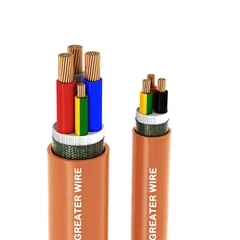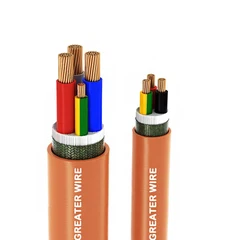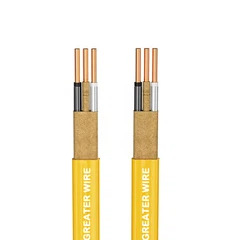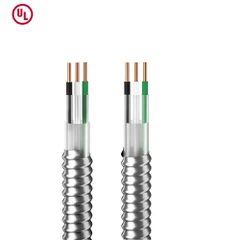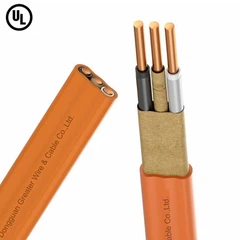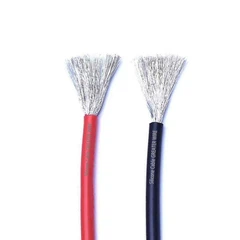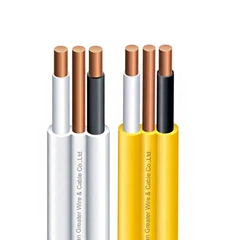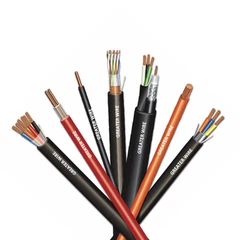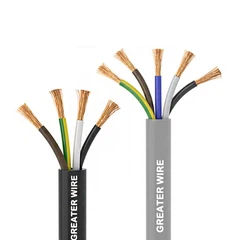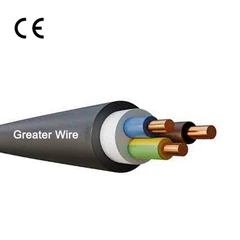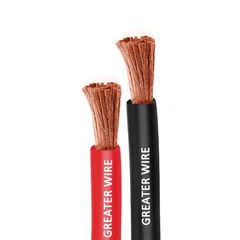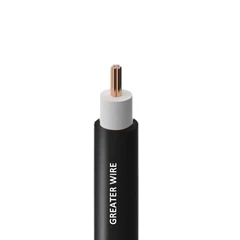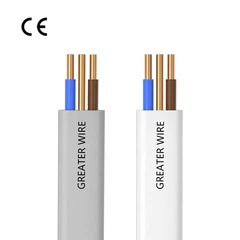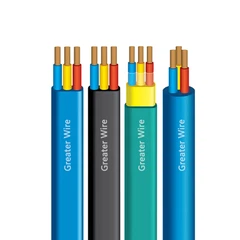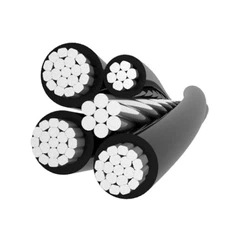In the vast landscape of electrical wiring, the terms hook-up wire and lead wire are often used interchangeably by those unfamiliar with their specific functions. However, for engineers, technicians, and designers, understanding the distinction between these two types of wires is critical for ensuring the safety, performance, and reliability of electronic and electrical systems. Each wire type is tailored for particular applications, and selecting the wrong one can lead to operational failures, shortened lifespan, or safety hazards. In this article, we explore the characteristics, applications, and differences between hook-up wire and lead wire, providing a clear guide for making informed choices.
Understanding Hook-up Wire
Hook-up wire is a single insulated conductor primarily used for internal wiring within devices, panels, and control systems. Its design focuses on flexibility, compact routing, and precision, making it ideal for connecting components in confined spaces. The conductor is typically made of high-purity copper, either solid for rigidity or stranded for flexibility. Stranded conductors excel in applications that involve vibration or repeated bending, such as robotic arms, automotive wiring harnesses, or industrial machinery. Solid conductors are more suitable for stationary applications like printed circuit boards, terminal blocks, or control panels.
The insulation layer of hook-up wire is just as important as the conductor itself. It prevents short circuits, protects against electrical shock, and determines the wire's resistance to temperature, chemicals, and mechanical stress. Common insulation materials include PVC, Silicone Rubber, PTFE (Teflon), and XLPE. PVC is cost-effective and flame-retardant, suitable for general indoor appliances. Silicone insulation excels in high-temperature and high-flexibility environments, ideal for industrial machinery or LED lighting systems. PTFE provides chemical resistance, high-temperature endurance, and excellent flame-retardant properties, making it suitable for aerospace, medical, and high-performance electronics. XLPE combines durability with flame resistance for demanding industrial and automotive applications. Hook-up wires are often color-coded, facilitating easier installation, maintenance, and troubleshooting in complex systems.
Because of this combination of conductor and insulation, hook-up wire delivers reliable performance, safety, and versatility, making it a staple in many electronic and electrical assemblies.

Understanding Lead Wire
Lead wire, by contrast, is a type of insulated wire generally used for connecting electrical components to external devices or power sources. While hook-up wire is focused on internal routing within a device, lead wires serve as connectors between devices or from a device to its power supply. The conductor in lead wire is also typically made of high-purity copper, and it may be stranded to allow flexibility for movement or vibration. Lead wires usually have more robust insulation to handle repeated motion, environmental exposure, or extended routing distances.
Lead wires are common in applications such as motors, transformers, sensors, audio equipment, and lighting fixtures, where the wire must extend outside the device enclosure or connect to external circuits. The insulation is often designed to provide durability and environmental protection, including resistance to heat, moisture, and abrasion. Unlike hook-up wires, which are often tightly routed and color-coded for internal wiring clarity, lead wires are generally identified by length, gauge, and insulation type, tailored to the device's operational requirements.
Key Differences Between Hook-up Wire and Lead Wire
While both hook-up wire and lead wire are insulated conductors, they differ in purpose, design, and application.
1.Purpose and Usage: Hook-up wire is primarily for internal wiring inside devices, whereas lead wire is intended for external connections or linking devices to power sources.
2.Flexibility and Insulation: Hook-up wire often emphasizes compact routing and fine flexibility within confined spaces, while lead wire may have thicker insulation to withstand environmental stress and repeated movement outside device enclosures.
3.Application Environment: Hook-up wire is mostly used in indoor, controlled environments such as circuit boards, panels, or internal machinery connections. Lead wires are designed to handle a wider range of environments, including variable temperatures, mechanical stress, and sometimes outdoor exposure.
4.Identification: Hook-up wires are often color-coded to simplify internal wiring and maintenance, whereas lead wires are usually specified by length, gauge, and insulation type, tailored for specific device or installation requirements.
These distinctions are essential for engineers to consider when selecting wires to ensure the safety, functionality, and longevity of electrical systems.
Applications of Hook-up Wire
Hook-up wire is used widely across industries. In household appliances, it connects motors, sensors, and switches within microwaves, washing machines, and refrigerators. Industrial machinery utilizes silicone or XLPE hook-up wires to endure repetitive motion, high temperatures, and chemical exposure in robotics, conveyor systems, and CNC machines. In automotive applications, hook-up wire provides reliable connections within engine compartments, infotainment systems, and sensor networks due to its flexibility and heat resistance. Medical devices rely on PTFE or silicone wires for chemical resistance, high-temperature performance, and flame-retardant properties. Even in aerospace and defense, specialized hook-up wires ensure safe and reliable connections within critical control systems.
Applications of Lead Wire
Lead wire is similarly versatile but focuses on external connections. It is widely used in motors, where it connects the internal coils to external power circuits; in transformers, to link windings to input/output terminals; in sensors, to provide connections from the sensing element to measurement or control devices; and in lighting fixtures or audio equipment, to carry power from external sources or connect modular components. Lead wire must maintain durability against mechanical stress, vibration, and environmental exposure, ensuring that external connections remain safe and reliable over time.
Selecting the Right Wire
Choosing between hook-up wire and lead wire-and selecting the correct specifications for each-requires attention to multiple factors:
- Electrical Requirements: Voltage, current capacity, and conductor gauge must meet the operational needs of the application.
- Environmental Conditions: Temperature, moisture, chemical exposure, and mechanical stress dictate insulation type and thickness.
- Flexibility and Mechanical Stress: Stranded conductors and flexible insulation are preferred for components that experience bending, vibration, or motion.
- Certifications and Compliance: Wires should meet standards such as UL, CE, CSA, or IEC, ensuring safety, flame retardancy, and electrical performance.
By considering these factors, engineers can ensure that internal circuits and external connections are both safe and reliable.
Proper Usage and Maintenance
Regardless of type, proper installation and maintenance are essential. For hook-up wire, maintain correct bend radii and secure routing within devices to prevent stress or damage. For lead wire, ensure adequate strain relief, secure terminations, and protection against abrasion or environmental exposure. Periodic inspection is recommended, especially for devices exposed to vibration, heat, or outdoor conditions. Proper handling ensures long-term reliability and operational safety for both hook-up and lead wires.
Why Choose Dongguan Greater Wire & Cable Co., Ltd.?
Selecting a trusted manufacturer is as critical as selecting the correct wire type. Dongguan Greater Wire & Cable Co., Ltd. has over 30 years of experience in producing high-quality hook-up and lead wires, supplying products to more than 80 countries worldwide. We offer a wide range of insulation types including PVC, Silicone, PTFE, and XLPE, suitable for both internal and external applications.
Our wires meet over 50 international certifications, including UL, CE, TUV, CSA, and IEC/EN, guaranteeing compliance with flame, voltage, and environmental standards. We provide custom solutions for conductor type, insulation, voltage rating, color coding, and length to match the unique requirements of any industry. Our 50,000㎡ modern factory features automated production lines and rigorous quality control, while our 24/7 technical support team ensures reliable guidance for selecting, installing, and maintaining wires. Partnering with us ensures access to safe, high-performance, and compliant hook-up and lead wires tailored for your specific applications.
Hook-up wire and lead wire, while similar in structure, serve distinct roles in electrical systems. Hook-up wire excels in internal connections, emphasizing flexibility, compact routing, and precise identification, while lead wire is designed for external connections, offering durability and environmental resilience. Selecting the right wire, considering electrical requirements, environmental factors, and compliance standards, is essential for achieving safety, reliability, and performance.
Dongguan Greater Wire & Cable Co., Ltd. offers decades of expertise, comprehensive product ranges, global certifications, and customization options, delivering solutions that meet both internal and external wiring needs across industries.
Contact Us:
Dongguan Greater Wire & Cable Co., Ltd.
Tel/WhatsApp/WeChat: +86 135 1078 4550 / +86 136 6257 9592
Email: manager01@greaterwire.com

